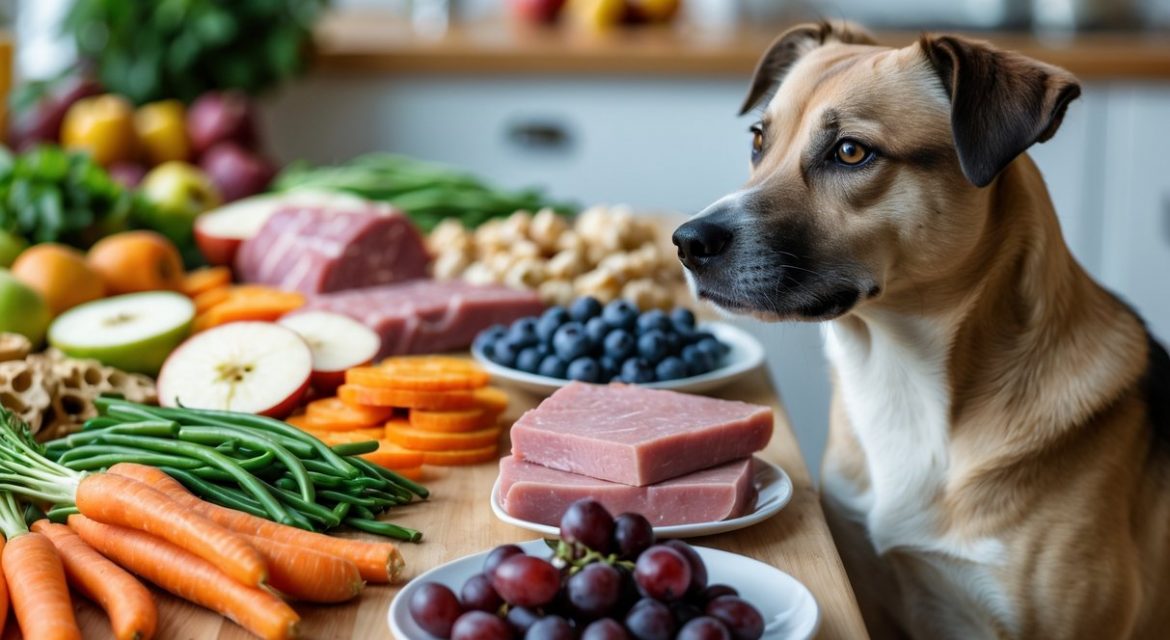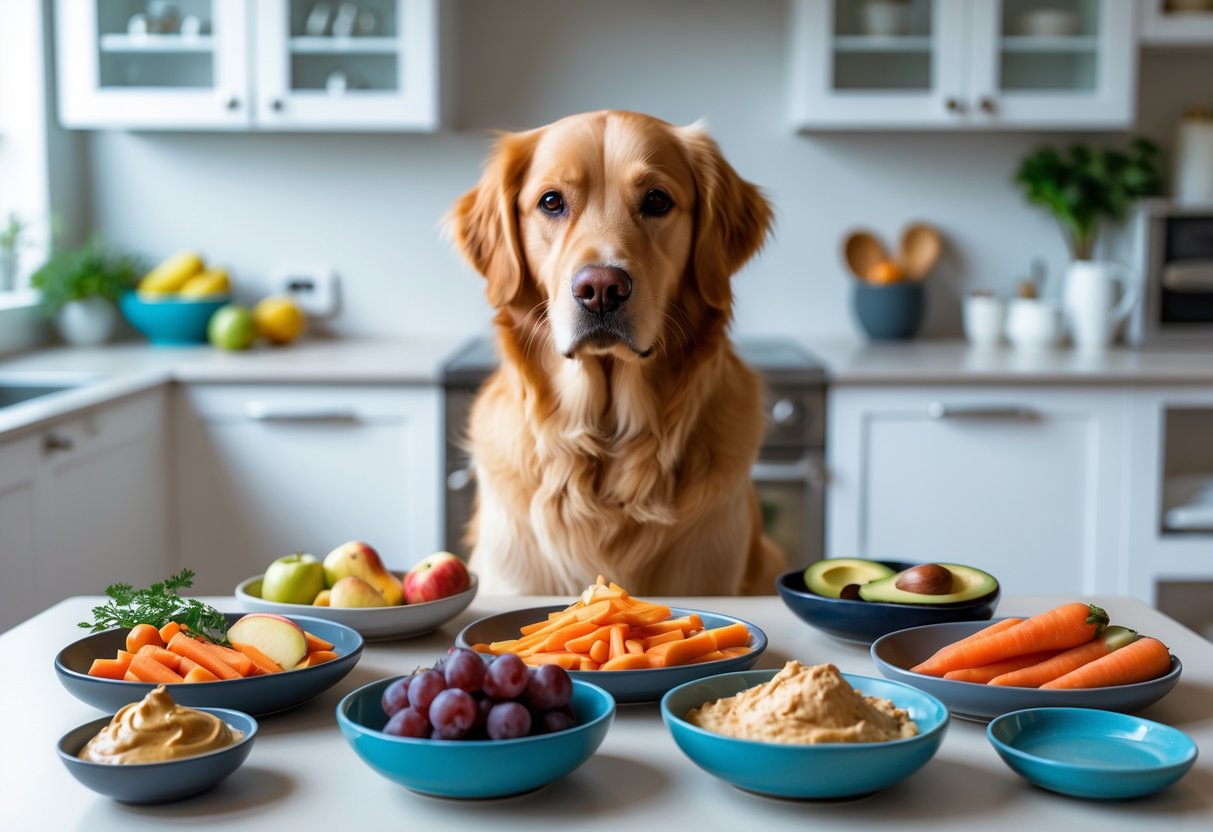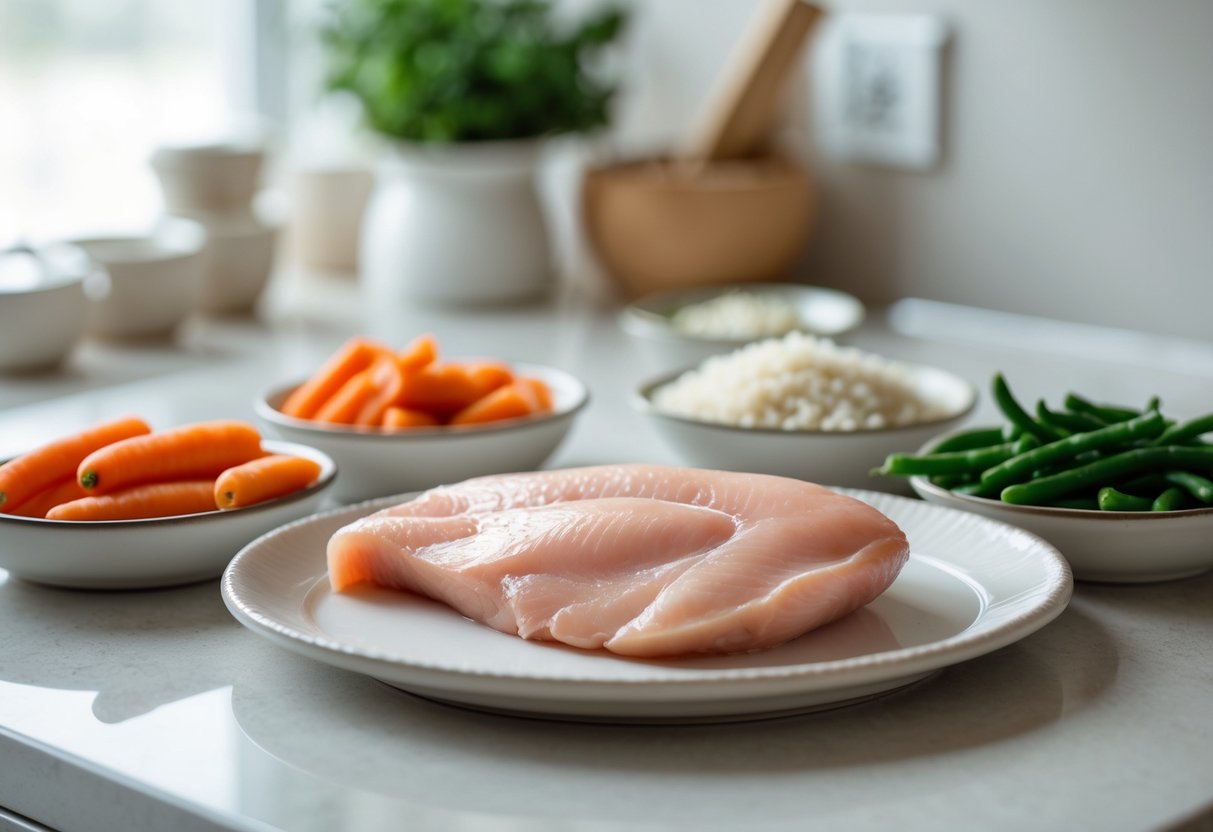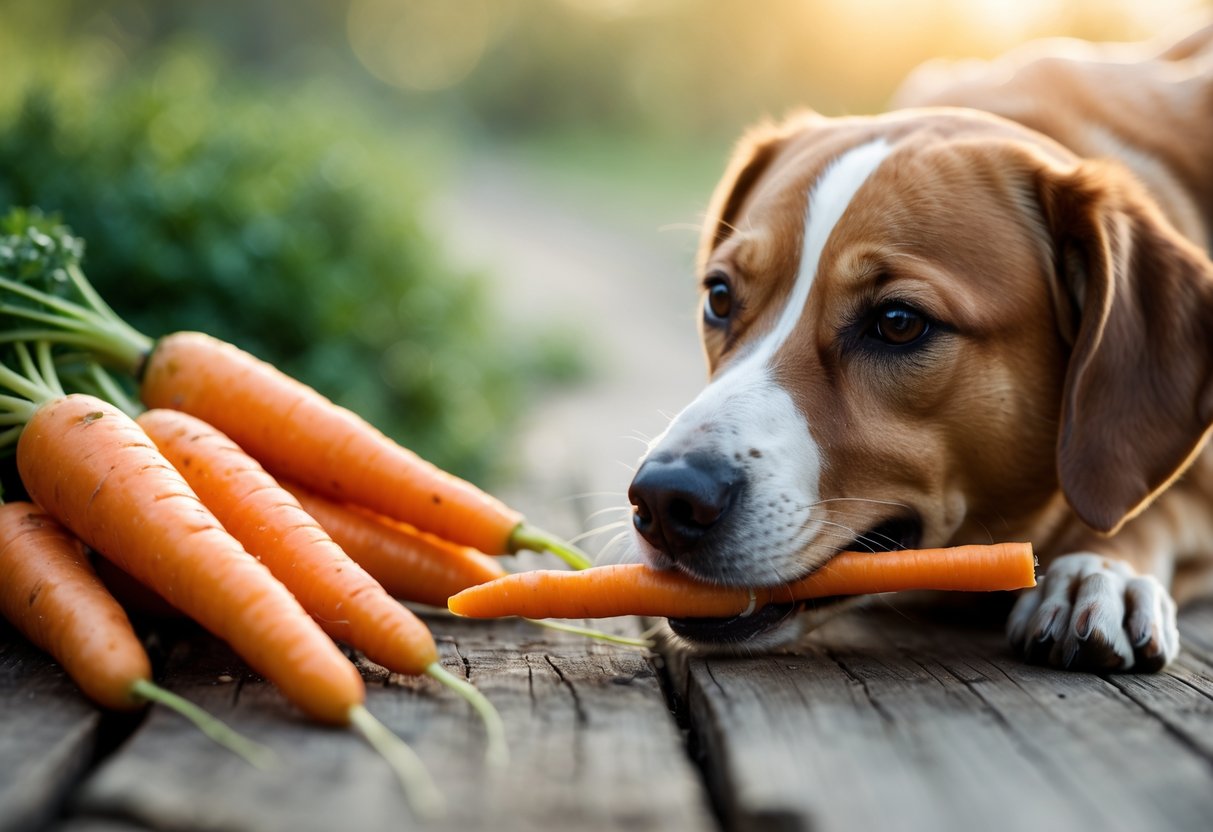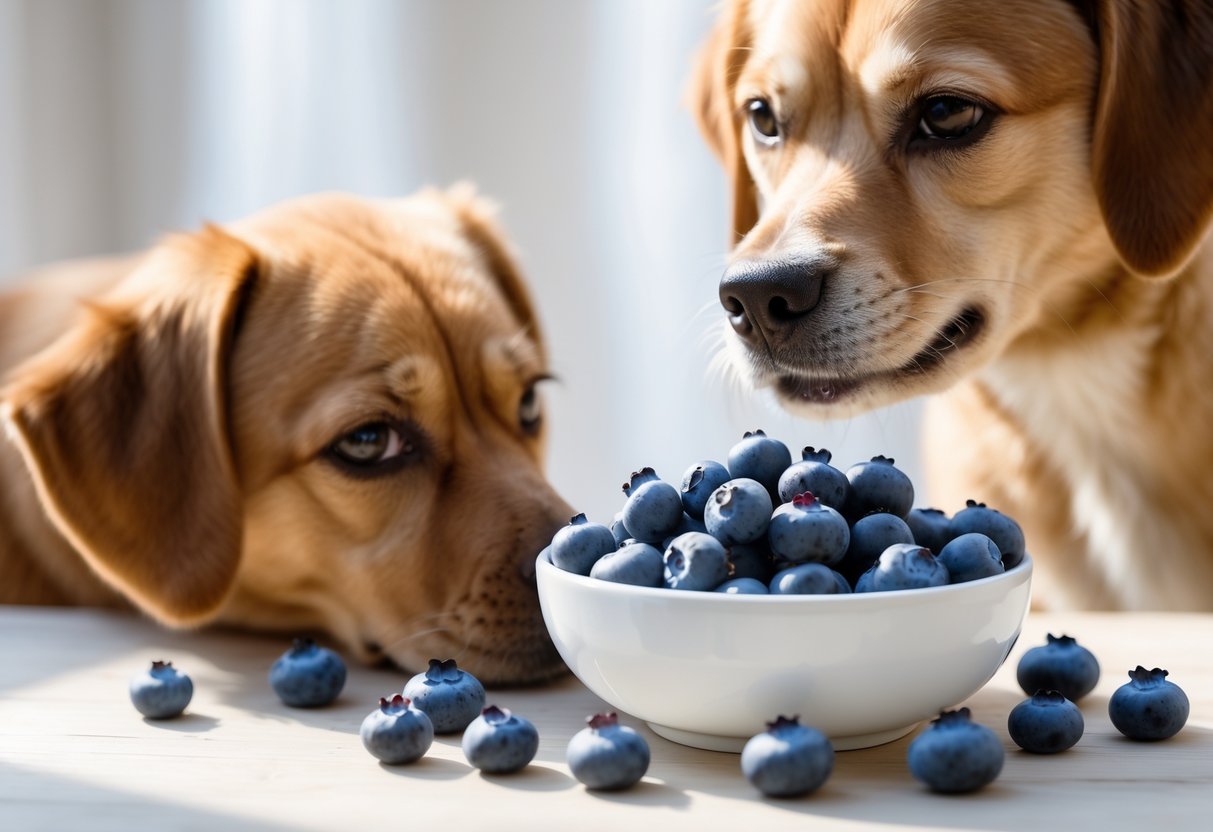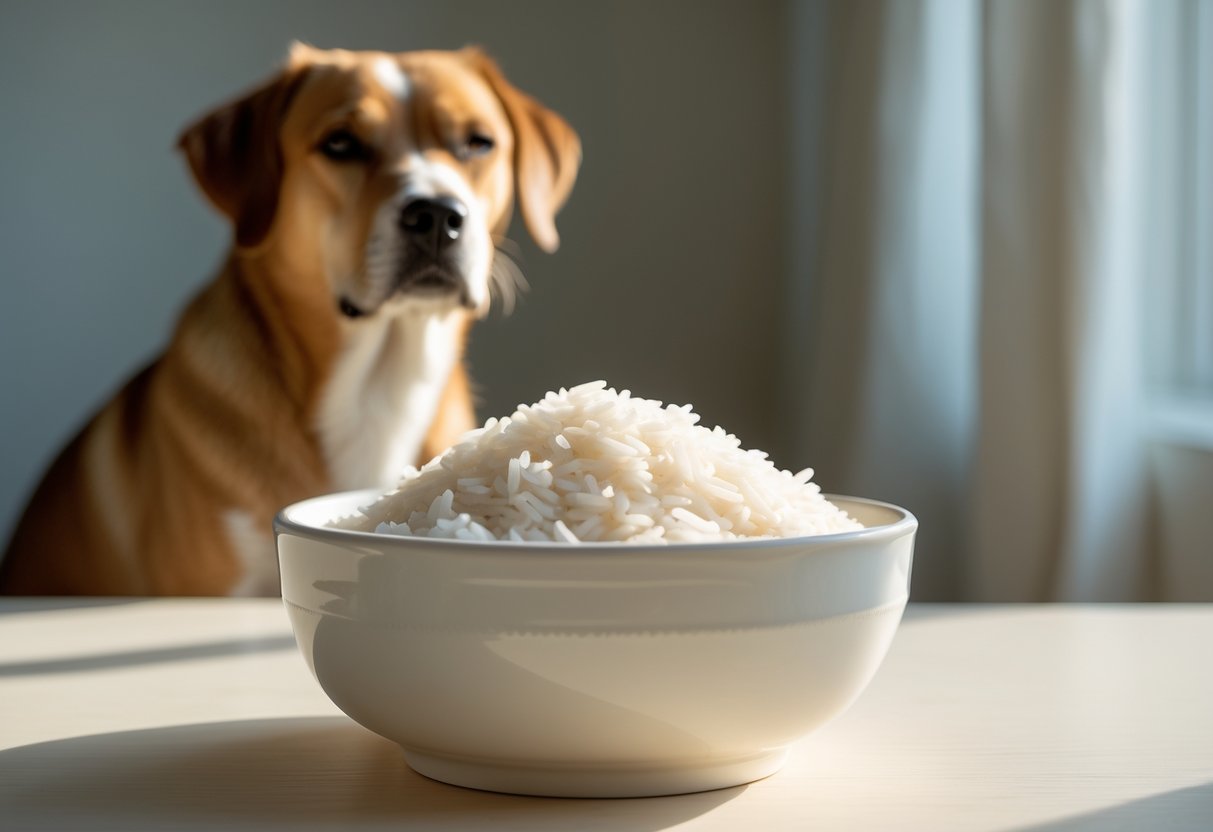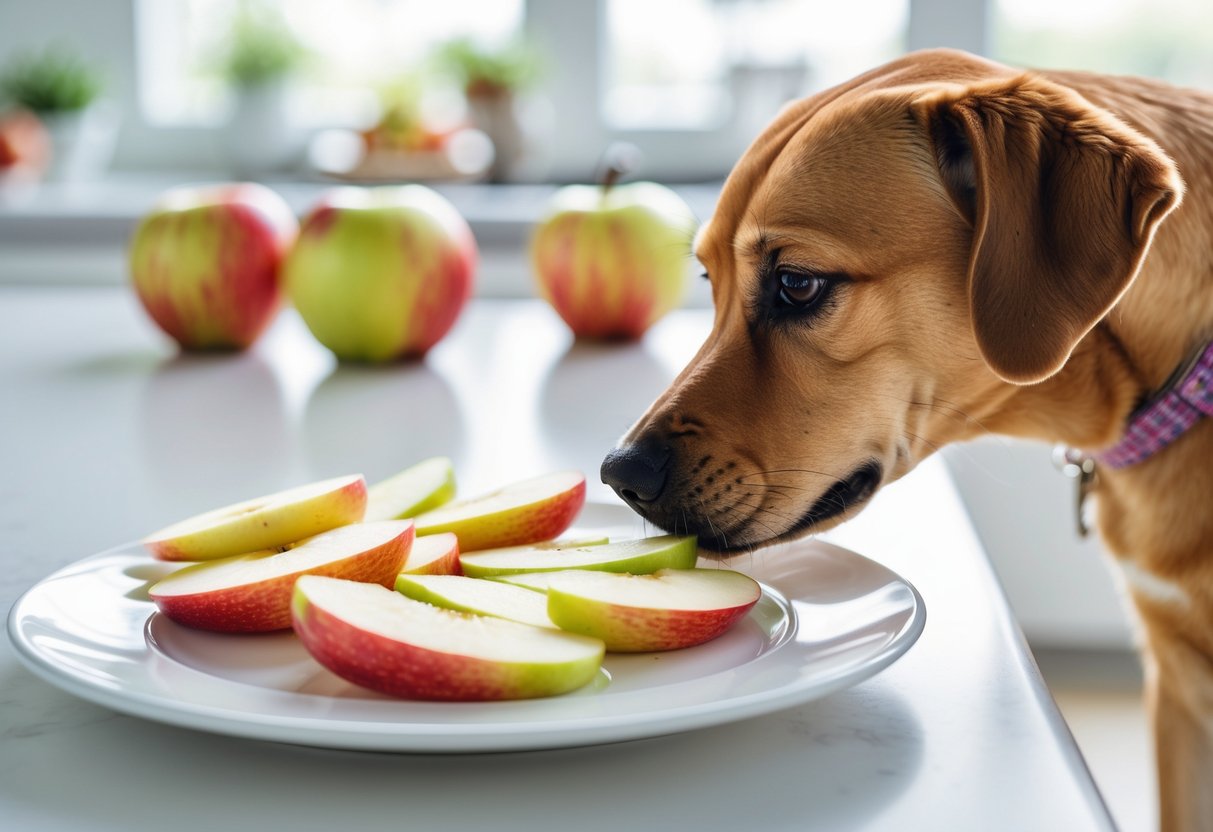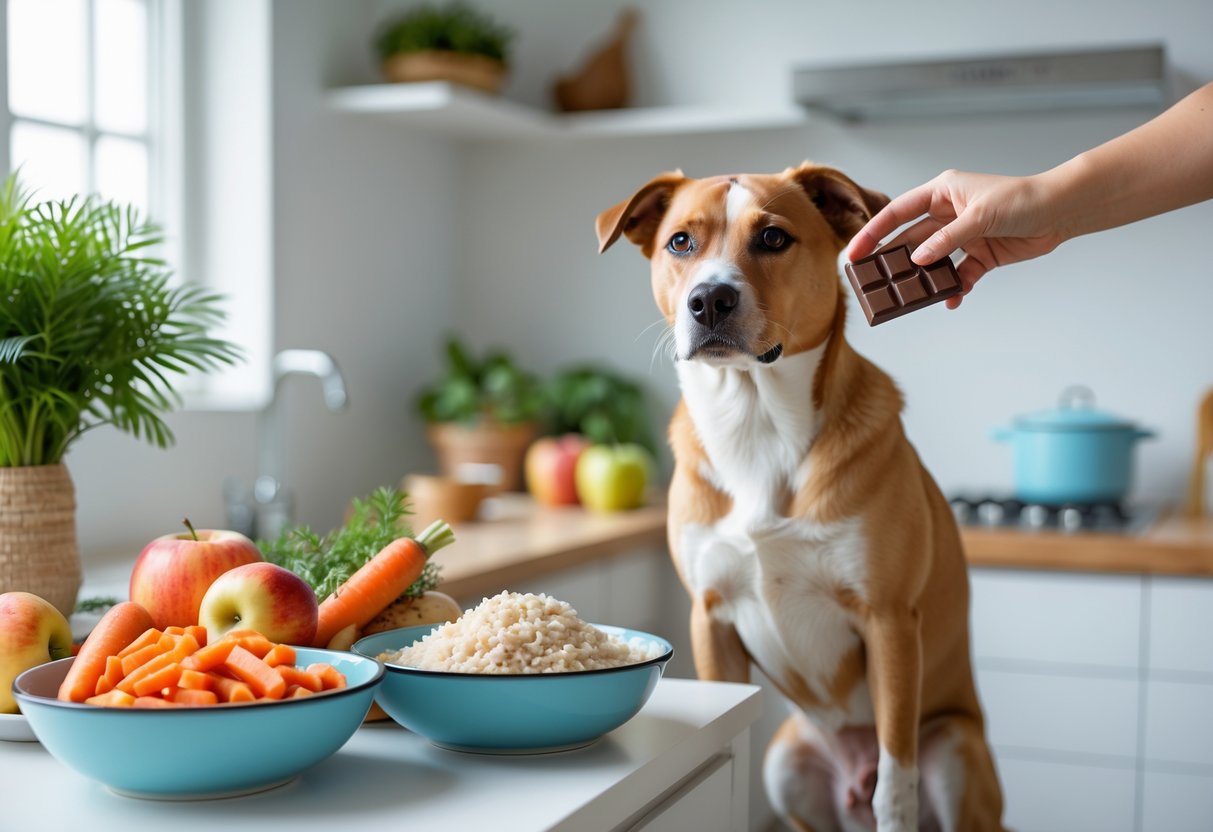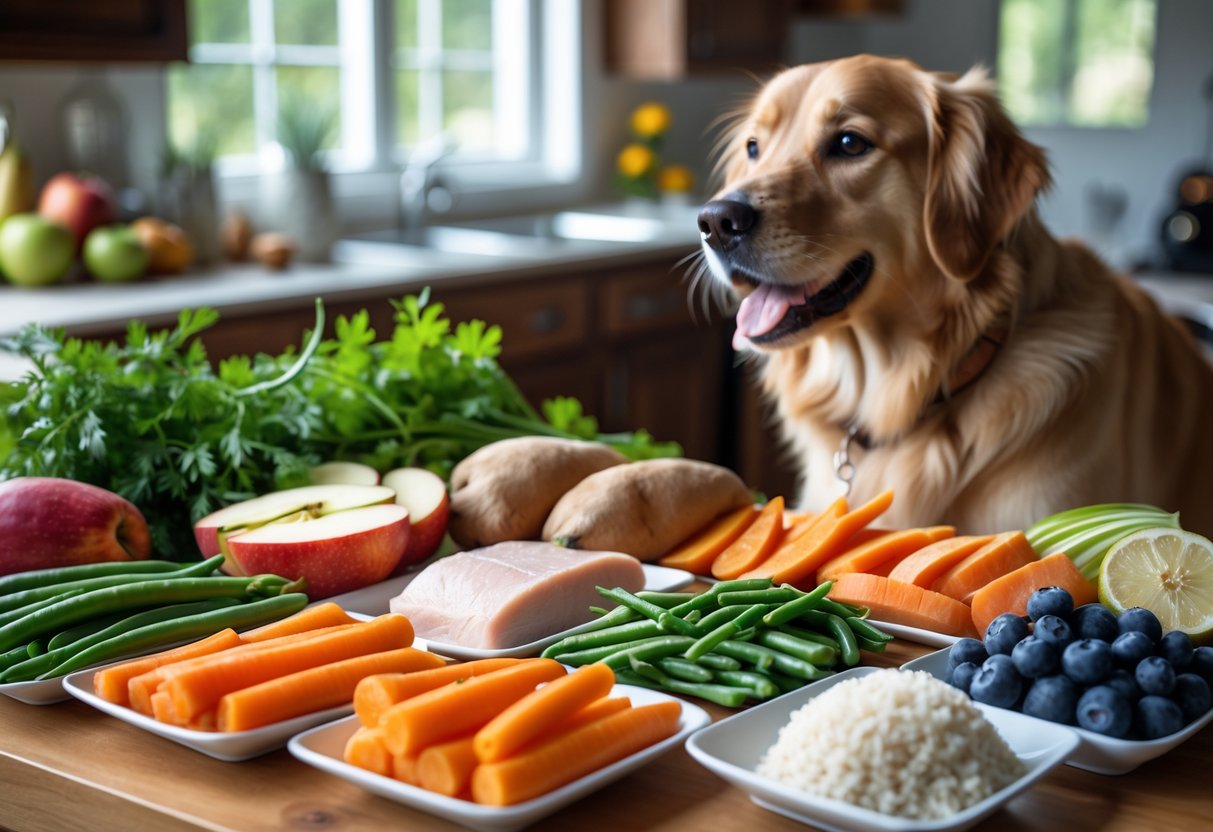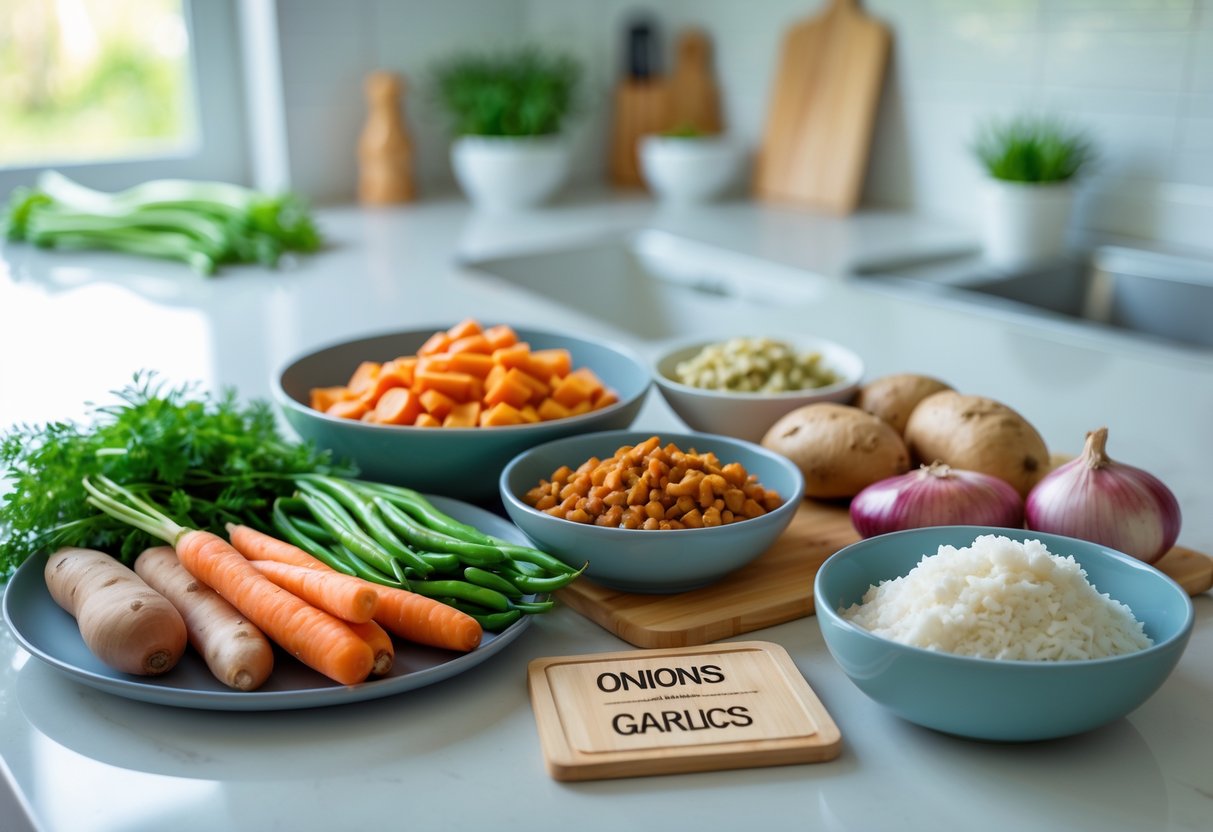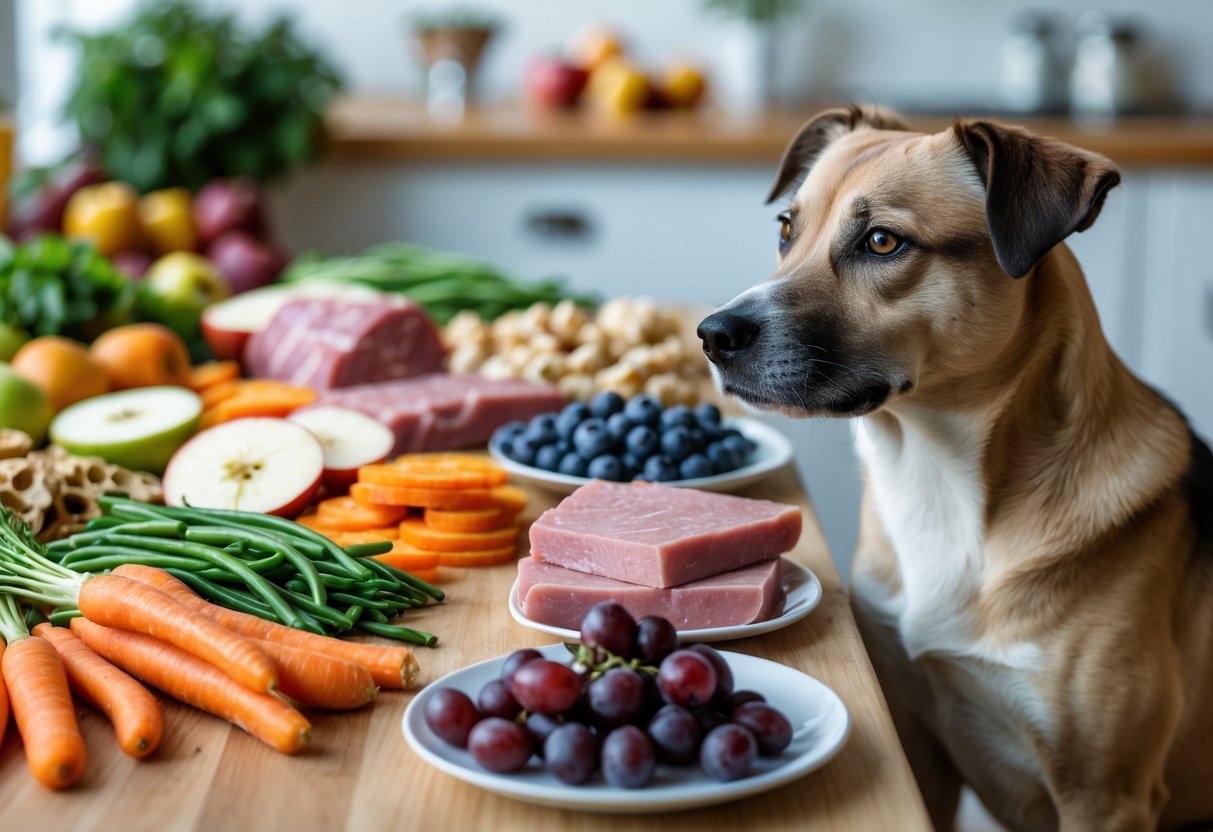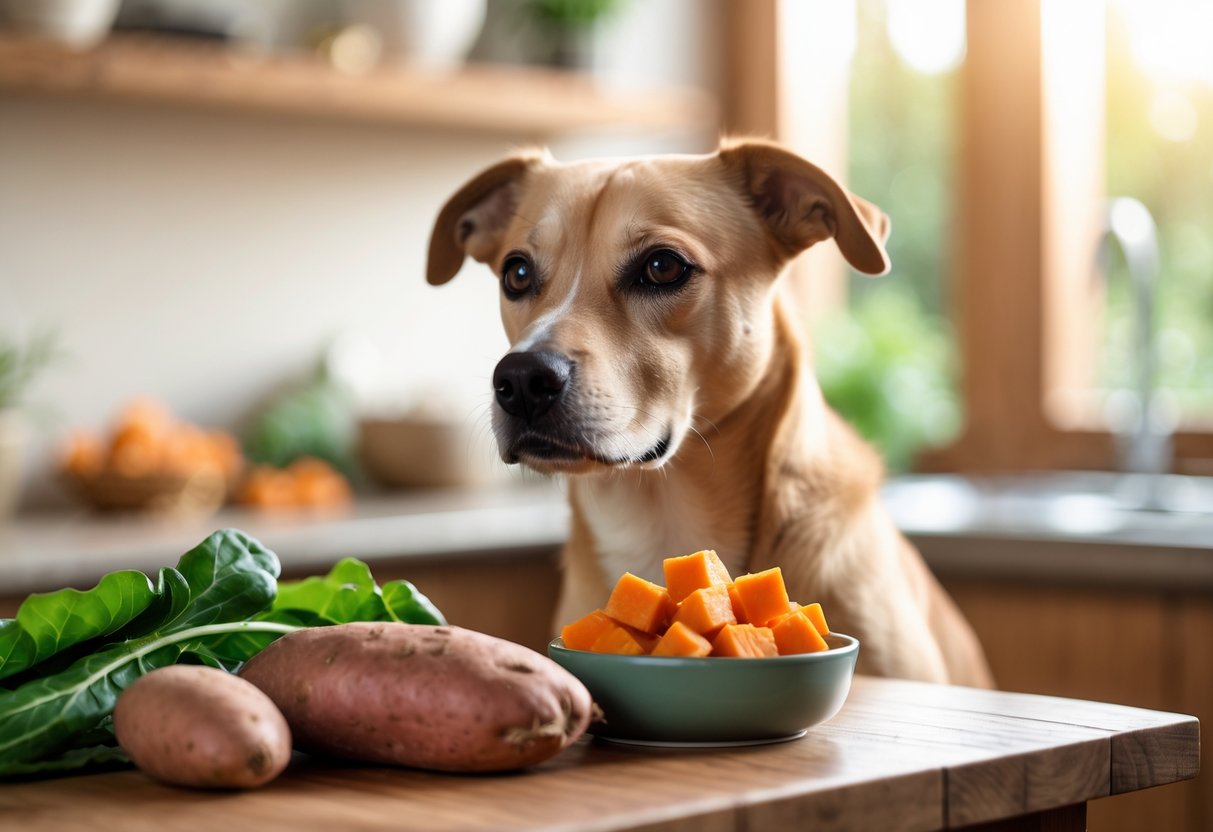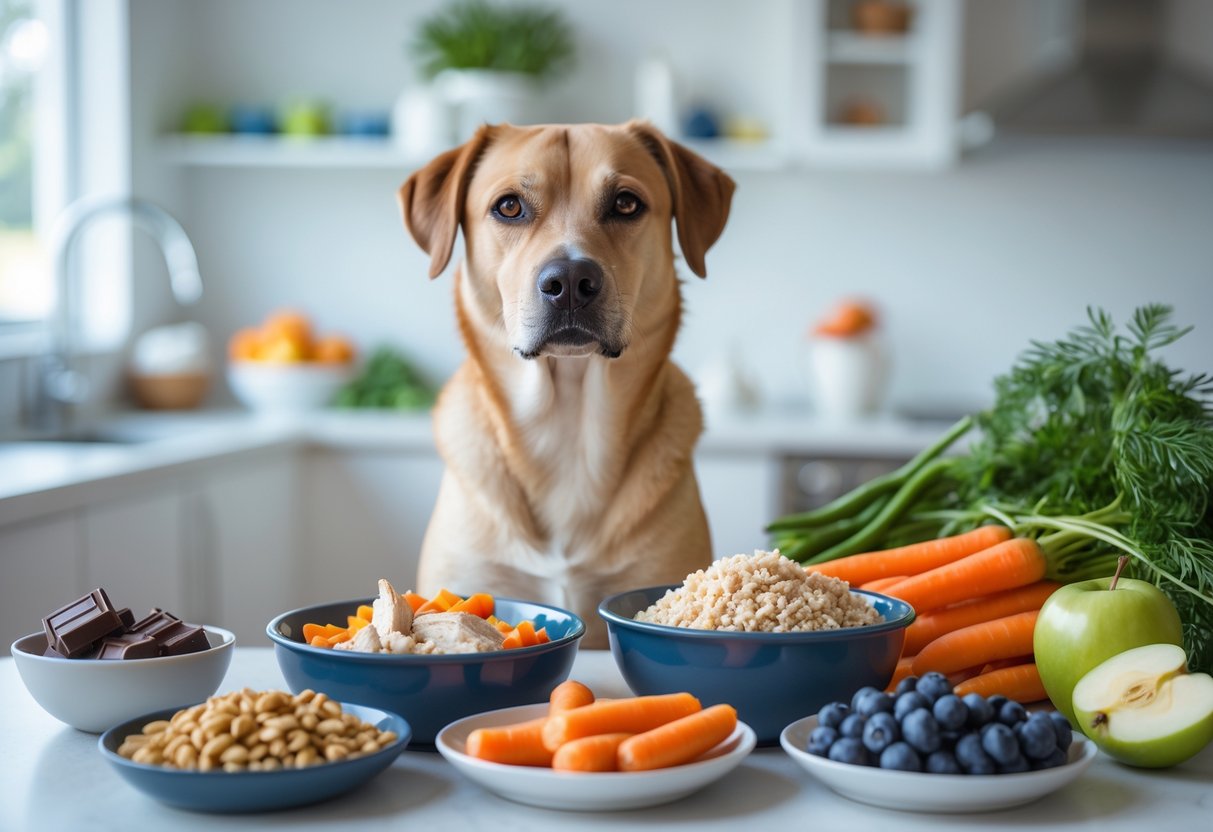When you’re caring for a dog, figuring out what they can or can’t eat really matters for their health. Lots of us want to share our food with our pups, but it’s not always clear what’s safe.
This leads to plenty of worry—nobody wants to accidentally give their dog something harmful.
Knowing which foods are safe and which aren’t helps keep dogs healthy and can prevent serious health issues. If you learn about the right choices, you’ll feel more confident about what you’re feeding your pup.
This guide aims to clear up some of the confusion so you can keep your furry friend happy.
1) Lean chicken without seasoning
If you’re looking for a healthy treat, plain, cooked chicken breast is a good pick. Just make sure it’s cooked all the way through and skip the seasonings—spices can upset your dog’s stomach or worse.
Plenty of owners find that boiled chicken is gentle on their dog’s digestion. It’s a lean protein source without extra fat or weird additives.
Always remove skin and bones before serving. Bones can choke dogs or cause nasty digestive issues.
When you offer lean chicken, keep portions small. It’s a nice boost to their usual food, but too much can throw off their nutrition.
Moderation is key—don’t go overboard. For more on this, check out this guide on safe chicken feeding.
2) Carrots as crunchy treats
Carrots make a great crunchy snack for dogs. They’re low in calories and packed with fibre, which helps with digestion.
Lots of pups love the snap and texture of a raw carrot. Plus, carrots have vitamin A for eyesight and a shiny coat.
Just don’t overdo it—carrots are best in moderation. Always chop them into small pieces, especially for little dogs, to avoid choking.
Some dogs might not digest carrots super well at first, so introduce them slowly and watch for any tummy troubles.
Cooked carrots are fine, but raw ones are better for keeping teeth clean. Treats like carrots shouldn’t replace a balanced diet, but they’re a nice bonus.
Want more tips? Here’s a vet-approved guide on feeding carrots safely.
3) Blueberries for a sweet snack
Blueberries are a safe treat and lots of dogs seem to love their sweetness. They make a healthy snack without piling on calories.
They’re loaded with antioxidants and vitamins, which might help your dog’s immune system and coat. Still, don’t go crazy—just a few berries at a time is enough.
Stick to fresh or thawed blueberries, especially for tiny dogs, since frozen ones can be a choking hazard. Skip anything with added sugar or xylitol.
If you’re trying blueberries for the first time, watch for any digestive issues or allergies. If something seems off, stop right away and ask your vet.
Curious about more details? Here’s a vet-approved guide on blueberries for dogs.
4) Plain cooked rice
Plain cooked rice is simple, safe, and easy to share with your dog. If your pup’s got an upset stomach, rice is gentle and easy to digest.
Vets often recommend it for dogs who need a bland meal. Just make sure it’s plain—no salt, spices, or sauces. Those extras can really mess with a dog’s stomach.
Both white and brown rice are fine, but always in moderation. Rice offers a quick energy boost from carbs, but it shouldn’t replace their main diet.
Never give raw rice—it’s tough to digest and can cause stomach problems. When cooked and served right, rice can help round out a meal.
Want more info? Check out this vet-approved guide on dogs and rice.
5) Apple slices without seeds
Apple slices make a crunchy, tasty treat for dogs. Always remove the seeds first—they contain cyanide, which isn’t safe if your pup eats a lot of them.
Take out the core too. It can be a choking hazard or cause digestive problems if swallowed.
Slices without seeds and core are safe and easy for dogs to chew. Apples have vitamins A and C for immune support, plus fibre for digestion.
Stick to fresh apple slices and skip the sugar, cinnamon, or any flavorings. Those extras might upset a dog’s stomach or cause other issues.
Keep these tips in mind when sharing apples. It’s a simple, healthy switch-up from the usual treats. For more advice, check out how to serve apples to your dog properly.
6) Avoid chocolate always
Chocolate is a big no for dogs. It’s got theobromine and caffeine, and dogs just can’t break those down.
Even a little can make them sick, from a mild tummy ache to seizures or heart problems. The risk depends on your dog’s size, the type of chocolate, and how much they ate.
Dark and baking chocolates are the worst offenders—they have more theobromine. Milk chocolate is a bit less dangerous, but still off-limits.
If your dog eats chocolate, call your vet right away. Fast action can really make a difference.
Keep chocolate out of reach and remind everyone not to share chocolate treats with pets. Here’s more on the risks of chocolate for dogs: Why Dogs Can’t Eat Chocolate | Profound Risks and Symptoms Explained.
7) No grapes or raisins
Never give dogs grapes or raisins. Even a small amount can be really dangerous.
We’re still not totally sure why these fruits are toxic, but they can cause kidney failure, which is life-threatening.
Watch for signs like vomiting, diarrhoea, tiredness, or stomach pain. If your dog eats any grapes or raisins, act fast.
Keep these fruits far away from your dog and let others know about the risk. There are plenty of safer fruits to share.
For more info on this, check out this vet-approved guide.
8) Onions and garlic off-limits
Onions and garlic are foods dogs should never eat. They belong to a group called alliums, which can be harmful even in small amounts.
These plants contain stuff that damages a dog’s red blood cells and can lead to some pretty serious health problems. It doesn’t matter if the onions or garlic are raw, cooked, dried, or powdered—every form is risky for dogs.
Sometimes symptoms take a couple of days to show up, so if your dog eats any of these, don’t wait around. Act fast.
Keep onions, garlic, leeks, chives, and similar foods far out of reach. They sneak into a lot of meals, and it’s easy to forget they’re unsafe for our pets.
If your dog does eat onions or garlic, call your vet right away. Early treatment can really help prevent lasting damage.
You can check out more info on this at PDSA’s guide to onion and garlic poisoning in dogs.
9) No cooked bones
Cooked bones are never safe for dogs. When you cook bones, they get brittle and break into sharp pieces way too easily.
These splinters can hurt a dog’s mouth or throat. Worse, they might cause serious damage inside the stomach or intestines.
Lots of dogs love chewing on bones, but cooked ones just aren’t worth the risk. Choking and internal injuries are real possibilities here.
If you want to give your dog a bone, raw bones are a safer bet. They’re softer and less likely to splinter, though you still need to supervise your dog while they chew.
Cooked bones can also carry bacteria that could make your dog sick. Sticking to raw, meaty bones helps keep your dog healthier and happier.
Read up on the risks of cooked bones and safer options in this vet-approved guide on dog bones.
10) Sweet potatoes in moderation
Sweet potatoes can be a tasty, healthy treat for dogs if you offer them in small amounts. They’re packed with vitamins, fibre, and antioxidants that support wellbeing.
Always serve sweet potatoes cooked and plain. Raw sweet potatoes are tough to digest and might upset a dog’s stomach.
Start with a small portion and see how your dog reacts. Some dogs have sensitivities or even allergies, though that’s pretty rare.
Sweet potatoes shouldn’t make up more than 10% of your dog’s daily food. Too much can lead to digestive problems or weight gain, which nobody wants.
If your dog has diabetes or blood sugar issues, it’s best to skip sweet potatoes. When in doubt, check with a vet before adding new foods.
Learn more about sweet potatoes for dogs at PetMD.
Why a Balanced Diet Matters for Your Dog
A balanced diet gives dogs the right mix of nutrients to keep their bodies and minds working well. It affects energy, growth, and helps avoid health problems.
Feeding wisely means matching food to their size, age, and activity. That’s how you support long-term health.
Understanding Nutritional Needs
Dogs need a mix of protein, fats, carbohydrates, vitamins, and minerals. Protein builds muscles and repairs tissue.
Fats give energy and support brain and skin health. Carbohydrates provide energy and help with digestion, but dogs don’t need a ton compared to protein and fat.
Vitamins and minerals play big roles in immunity, bone strength, and general wellbeing. The right amounts depend on breed, age, and activity level.
Puppies need more nutrients for growth. Older dogs might need fewer calories but more support for their joints.
Impacts of Dietary Choices on Wellbeing
The right food helps keep your dog’s weight in check, which lowers the risk of things like diabetes or joint problems. Too much or too little food can cause obesity or malnutrition, and that’s no good for anyone.
Some human foods are dangerous—like chocolate or onions—and can cause poisoning. Treats shouldn’t make up more than 10% of your dog’s daily intake.
Balanced meals help keep coats shiny, digestion smooth, and immunity strong. For more advice and tips, check dog diet and nutrition.
Recognising Signs of Unsafe Foods
Dogs react to harmful foods in all sorts of ways. If you catch the signs early, you can act fast and keep your pup safe.
Watch for changes in behaviour or weird symptoms that just don’t seem normal for your dog.
Common Symptoms of Food Reactions
If a dog eats something toxic, you might notice:
- Vomiting or repeated retching
- Diarrhoea, sometimes with blood
- Excessive drooling or foaming at the mouth
- Sudden lethargy or weakness
- Shaking or trembling
- Loss of appetite or refusing to eat
- Signs of abdominal pain, like whining or restlessness
Some dogs might also have trouble breathing or even collapse if things get really bad. Symptoms can show up within hours or sometimes take longer, depending on what was eaten.
What To Do If Your Dog Eats Something Harmful
If you think your dog ate something dangerous, don’t wait:
- Take away any leftover toxic food or objects
- Call your vet right away or contact an emergency animal poison centre
- Don’t try to make your dog vomit unless a professional tells you to
- Stay calm and note what your dog ate, how much, and when
Quick action can really improve recovery chances. Staying informed about toxic foods and knowing the symptoms can save your dog’s life.
For more details, check out recognising the signs of poisoning in dogs from the AAHA.
Frequently Asked Questions
Lots of foods can be safe or risky for dogs, so it’s worth knowing which ones are okay. Some fruits and veggies are great, while others are a definite no-go. Treats can be helpful if you pick the right ones, but some nuts and snacks for humans should be avoided completely.
What human foods are safe for dogs to enjoy?
Dogs can eat lean chicken without seasoning, and that’s a solid protein source. Carrots make crunchy treats most dogs love.
Blueberries are a sweet, healthy snack. Plain cooked rice is gentle on their stomachs. Apple slices work too, but always ditch the seeds.
Which fruits should we avoid giving to our furry friends?
Some fruits seem harmless but aren’t. Grapes and raisins are toxic—never feed these.
Avocados have persin, which can cause vomiting and diarrhoea. Always double-check before sharing new fruits with your dog.
Are there any vegetables that could harm our pooches?
Onions and garlic are dangerous, even in tiny amounts. They can damage red blood cells and cause serious problems.
It’s safer to skip any food with these in it. Other veggies like broccoli and sweet potato are usually safe and healthy.
Can you tell me about the nuts that dogs should never eat?
Macadamia nuts are poisonous and can cause weakness, tremors, and overheating. Walnuts and pecans can also upset your dog’s stomach or cause blockages.
Honestly, it’s best not to give your dog any nuts. Choose dog-friendly treats instead.
How can we identify foods that are toxic to dogs?
Look out for chocolate, grapes, raisins, onions, and garlic—they’re some of the worst offenders. If you’re not sure about a food, check a trusted guide or ask your vet.
An at-home allergy kit might also help you spot foods your dog can’t tolerate.
Pick treats that actually help with nutrition, like small bits of cooked lean meat. Some veggies, like carrots, are great too.
Blueberries? They’re full of vitamins and make a solid choice. Skip anything loaded with sugar, salt, or weird seasonings—dogs just don’t need that stuff.
Try new treats slowly, and keep an eye out for any odd reactions. Every pup’s a little different.
For more info on what’s safe or not, check out what dogs can and cannot eat – UK Pet Food.


